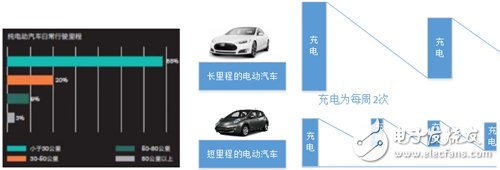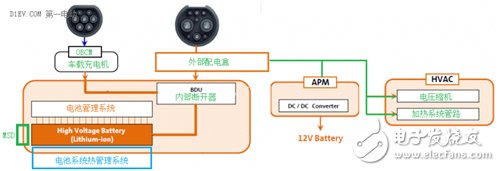A while ago, the relevant media held an open class on electric vehicle fast charging. The topic was “Charging for five minutes, the era of two hours driving is coming soon?â€, invited experts from all sides to make detailed comments, and the author combed the whole fast. The whole picture of charging found that because of the different usage scenarios of electric vehicles, it is difficult to reach an agreement on different topics from the same topic.
In the content of everyone's talk, it can be divided into the following three categories:
The first category: public operating vehicles (bus)
Public operations companies, public vehicles and DC charging facilities. In this area, the dominant vehicle is the public operating company, which determines the range and charging speed of the product based on the fixed operating line and coverage of the bus.
In this field, in fact, according to the actual situation of the operating line, each place has a direct decision on the characteristics and procurement of the vehicle. So we see that the basic characteristics of the component level are the same, but the vehicle and the facility are highly discretized. Unlike private users, which charge fast according to the power, there is no fixed customer in the bus industry, and there is a strong uncertainty. It is therefore difficult to classify such vehicles into large-scale bulk purchases, much like customized production, which also makes the bus market's various subdivision specifications particularly large. The local bus company will cover the daily bus line demand according to the characteristics of the line, and stipulate the charging time of each car. As for the loss of charging time, it will be converted into the cost of the extra vehicles that the bus company needs to purchase. This is also the reason why the electric bus needs to be charged quickly.
Remarks: According to the guests, the current solution for electric buses is to use 400 guns of 400 to 450 amps (700 volts for buses, 300 kW or more for the entire power) to charge, so the battery capacity of the electric bus battery, bus cables and Designs such as connectors require a high level of requirements.
Figure 1 Publicly operated vehicles
The second category: proprietary operations and heavily operated vehicles (logistics and taxis)
Operating companies (including individuals in business and operating networks), production tools (vehicles) and fast charging facilities. The taxi company purchased the electric car, purchased the charging facility, and then operated it with an electric taxi driver. The speed at which the charging speed is determined is the ratio of the time spent by the driver to the recharge of the vehicle and the operating time. Strictly speaking, such vehicles are subsidized because of the driver's charging price. The driver is completely hoping to use the fastest speed to recharge the electricity and then go to the operation. All the lost operating hours (charging) are actually the potential revenue lost by the driver.
Figure 2 Fast charging requirements for taxis
Since the above two categories use electric vehicles as production materials, there is a strict demand for the speed of charging, so the top is not capped. In pursuit of speed, whether it is vehicle cost (limited increase), Nissan maintenance requirements (replacement battery module group) or power requirements of the centralized station, it is no longer a problem. The main bottleneck here is still concentrated on the compromise of the battery cell's service life (fast charge has a loss of capacity, need to balance speed and loss).
At the same time, these two types of charging facilities can be said to be arranged in advance, dedicated to the car, and do not need to consider the availability problem in the whole cycle, which is one by one. So in some cases, this is a planned use scenario.
The third category: private electric vehicles
Owners, electric cars and DC charging facilities. This category is what we want to focus on, because it is the existence of private vehicles that allows electric vehicles to gain a foothold and have long-term and sustained demand to support this type of continued development. Let us look at the characteristics of these vehicles:
1. The difference in battery and cruising range will allow private electric vehicle owners to form two different modes of charging and use. Based on statistics, most car owners have a daily mileage of less than 50 kilometers. The use of slow charging is as follows:
Long-haul electric car owners can choose to charge 2 or 3 times a week, have confidence in driving mileage, and be able to cope with unexpected situations.
Low-mileage electric car owners, due to the limited mileage of the car itself, after many vehicles in the late mileage, after a rapid diving, they often choose to charge daily.

Figure 3 charging habits of different mileage
2. Fast charge for private car owners, generally based on emergency charging
On the one hand, the existing charging speed is limited, so that the owner will not leave his effective control range, on the other hand, because the inherent investment of the DC charging station is relatively high, the accounting charging service fee is higher, the electricity fee + charging service fee, 100 The kilometer consumes electricity, and the intuitive usage fee and fuel cost can be compared.

3. Private vehicles have a long service life. According to the warranty for 8 years, the charging situation of a pure electric private electric car may change:
The charging situation of a car may be very complicated. It may be that there is no DC fast charging network near the owner at the beginning. It does not need DC charging at all. It may also be used frequently with the rapid charge network update.
The difference between the car and the car is very large, and the filling situation of different cars is also very large.
4. The entire system (charging system and battery system) has high cost requirements.
Faster charging speeds have higher requirements for battery systems and charging systems, and charging speed (power) requires higher requirements for batteries and other related components. In simple terms, the DC fast charging system has electrical and safety requirements for the system's external power distribution box. The higher DC fast charging system has new requirements for the thermal management capability of the battery system.
Consideration of the life of the monomer: This is clearly written in the open class and several articles by Teacher Liu Guanwei. In the process of selecting a battery, the frequency of considering DC fast charging is limited, and a set of experiments can be selected to verify the adaptability of the battery to fast charging.

Figure 4 Overview of the DC Fast Charge System
summary:
Due to the different usage scenarios of electric vehicles, it is difficult to reach an agreement on different topics from different perspectives.
From the current commercial point of view, the battery can only reach the expected balance point with very heavy use. Therefore, fast charging is a hard requirement in this condition. It is characterized by fast speed and frequent frequency, and it shows the situation of fast charging and slow charging. . From the scope of promotion to the level of use, fast charging has become an occasional demand, fast charging speed requires fast, low frequency.
From the point of view of the charging network, it has become an industry practice to fast-charge the charging network around the dedicated fixed frequency of use to offset long-term revenue investment. However, considering the commercial fast-filling network for ordinary consumers, fast charging is more or less money-losing. The long-term income is facing low frequency. The owners are often unplanned and forced to charge. The operation needs more breaks. .
smart Interactive Whiteboard,touch screen displays,for teaching and conference;Smart board for classroom
smart board classroom,smart board for classroom,smart board in classroom,smart board lessons,smart board whiteboard,smart teach board
Jumei Video(Shenzhen)Co.,Ltd , https://www.jmsxdisplay.com